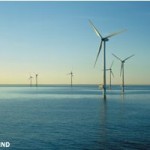The fourth release of Maplecroft’s Climate Change and Environment Risk Atlas includes a new Climate Change Vulnerability Index (CCVI) that analyzes and maps climate change vulnerability down to 25km² worldwide. It reveals that some of the world’s fastest growing populations are increasingly at risk from the impacts of climate related natural hazards including sea level rise.
Many of the countries with the fastest population growth are rated as ‘extreme risk’ in the CCVI, including the strategically important emerging economies of Bangladesh (2nd), the Philippines (10th), Viet Nam (23th), Indonesia (27th) and India (28th).
Climate change and population growth form the two greatest challenges facing the world over the next century. This issue of population growth is driven home by the recent announcement by the UN’s State of the World’s Population Report 2011 revealing that the world’s population has now reached 7 billion people.
The Climate Change Vulnerability Index features sub-national maps and analysis of climate change vulnerability and the adaptive capacity to combat climate change in 193 countries. It features an improved methodology analyzing the exposure of populations to climate related natural hazards and sensitivity of countries in terms of population concentration, development, natural resources, agricultural dependency and conflict.
At a national level, the CCVI rates 30 countries at ‘extreme risk’, with the top 10 comprising of Haiti, Bangladesh, Sierra Leone, Zimbabwe, Madagascar, Cambodia, Mozambique, DR Congo, Malawi and Philippines. Of these, Bangladesh and the Philippines are among the world’s fastest growing economies with growth rates of 6.6 and 5% per annum, respectively.
Sub-national Analysis Reveals Vulnerability of Fastest Growing Cities
The value of Maplecroft’s research is much better appreciated at a sub-national level, where risks to towns, cities, economic zones and individual company assets can be identified through interactive maps, which chart vulnerability, exposure and sensitivity to climate change down to 25km² worldwide. For instance, extreme hot-pots of vulnerability can be seen in the South West of Brazil and coastal regions of China, but both countries are rated ‘medium risk’ by the CCVI at the national level.
Vulnerability on this scale is illustrated particularly well when looking at the effects of climate change on the megacities of Asia; some of which have the highest rates of population growth, along with extreme vulnerability to climate change.
Of the world’s 20 fastest growing cities, six have been classified as ‘extreme risk’ by the CCVI, including the major Asian economic centers of Calcutta in India, Manila in the Philippines, Jakarta in Indonesia, and Dhaka and Chittagong in Bangladesh. Addis Ababa in Ethiopia also features. A further 10 are rated as ‘high risk’ including Guangdong, Mumbai, Delhi, Chennai, Karachi and Lagos.
Population Growth in Cities Combined with Socio-Economic Factors Increase Climate Risks
According to Maplecroft, population growth in these cities combines with poor government effectiveness, corruption, poverty and other socio-economic factors to increase the risks to residents and business. Infrastructures, which cannot cope at 2011 levels, will, therefore, struggle to adapt to large population rises in the future, making disaster responses less effective, whilst at the same time these disasters themselves may become more frequent. This has implications for buildings, transportation routes, water and energy supply and the health of the residents.
“Cities such as Manila, Jakarta and Calcutta are vital centers of economic growth in key emerging markets, but heat waves, flooding, water shortages and increasingly severe and frequent storm events may well increase as climate changes takes hold,” states Principal Environmental Analyst at Maplecroft, Dr. Charlie Beldon. “The impacts of this could have far reaching consequences, not only for local populations, but on business, national economies and on the balance sheets of investors around the world, particularly as the economic importance of these nations is set to dramatically increase.”
Climate Change Vulnerability Index 2011















